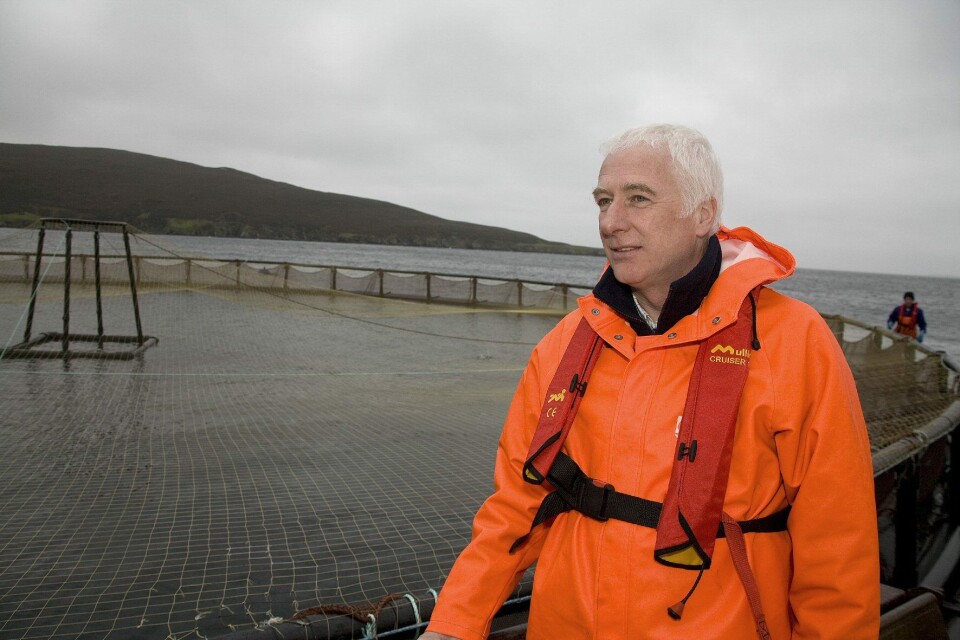
SSPO chief: Talks progressing over licence delays
Salmon industry spokesman Scott Landsburgh has said progress is being made towards a faster and more streamlined method of giving consent for fish farms.
Landsburgh was speaking after Craig Anderson, chief executive of the Scottish Salmon Company, warned that there was no chance of the industry doubling production to 350,000 tonnes a year by 2030 unless the system for applying for Controlled Activities Regulations (CAR) licences to farm fish was radically changed, along with the bodies governing the industry.

Anderson told the Herald newspaper: “Under the current regime of licence applications that is not going to be hit. We as a salmon producing nation will miss that target by far, that’s just a fact.”
Understandable frustration
Both the Scottish Government and aquaculture's Industry Leadership Group - made up of farmers, equipment suppliers and others who rely on the industry - have targeted a doubling of production in their Vision 2030 initiative.
Landsburgh, chief executive of the Scottish Salmon Producers' Organisation (SSPO), said: "I can understand Craig’s frustration but there is work ongoing, with the Industry Leadership Group representing all parts of the aquaculture industry, to discuss with government and the regulatory framework how we improve the consenting process.
“The Independent Consenting Process Review has come up with a number of proposals to improve matters and this really is follow-on work from all the planning reform for aquaculture work started by SSPO a few years ago, and there have been efficiency gains along the way.
“The Vision 2030 group did propose an ambitious target, and I hope that the further efficiency gains we are discussing will deliver a different growth trajectory to help us achieve targets.”
'Three years wasted'
Speaking about the slow pace of the fish farm licensing process, Anderson told the Herald: “Currently it takes three years from SEPA (Scottish Environment Protection Agency) and once you get your CAR licence you then have to go to the local authority to get planning [permission] to anchor your previously approved farm site to the seabed and if they refuse, that’s three years wasted.”
SEPA told the newspaper that a CAR licence typically takes six months to complete. “There are occasions when this process can take longer due to the complexity of an application. In some instances SEPA may require additional information in order to ensure that the environment is protected,” a spokesman told the Herald.
He added that planning permission can be applied for “before, during or after the CAR application submission”.
Five applications
The Scottish Salmon Company has five CAR applications listed on SEPA's website as awaiting approval. They are all for variations of existing licences to increase biomass at SSC farms.
One application, for Trilleachan Mor, Loch Seaforth, Isle of Harris, was received by SEPA on February 7 this year. Three others - for Tarbert South, Ardcastle and Ardgaddan, all on Loch Fyne - were received on January 10.
The application that has been awaiting approval longest is for an increase of net depth and biomass at St Molios, Lamlash Bay, Isle of Arran. It was submitted to SEPA on September 9, 2015.
'Mixed messages and clutter'
Anderson noted that the Scottish Government had been “very supportive” of the salmon farming industry, but he called on the four bodies who regulate the industry - Marine Scotland, Marine Scotland Science, Fish Health Inspectorate and SEPA - to look at how they could work together to make the industry “fundamentally better”.
“Maybe the Government should look at those four bodies becoming one,” he told the Herald. “Fairness and straightforwardness would be good for the whole industry rather than mixed messages and clutter.”
The Independent Review of Scottish Aquaculture Consenting was jointly commissioned by Marine Scotland and the Crown Estate in response to concerns expressed by industry, consenting bodies and regulators. Its report, published in March last year, can be found here.






















































